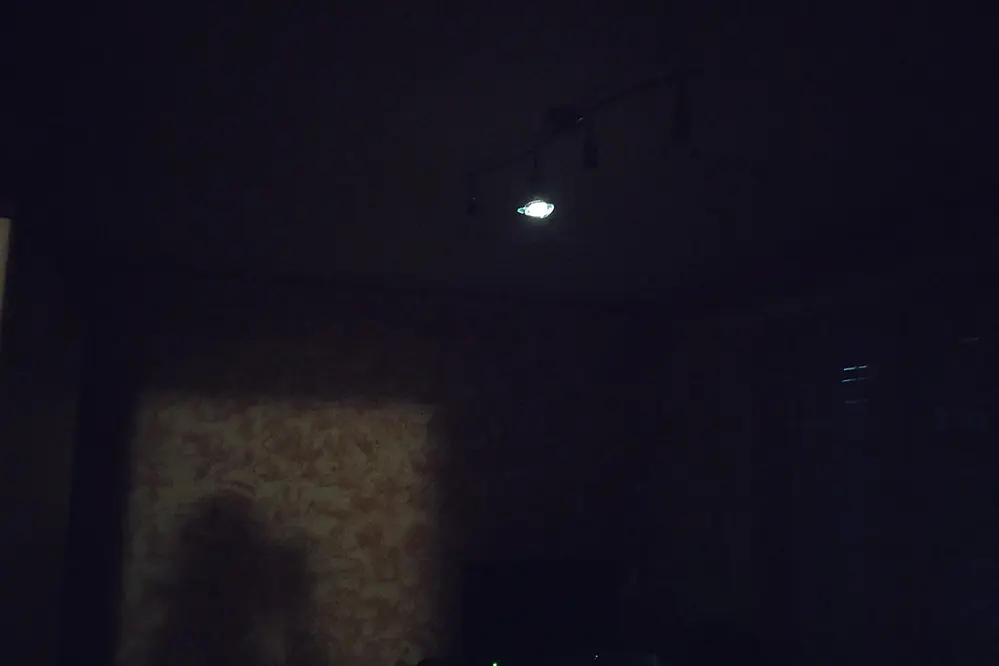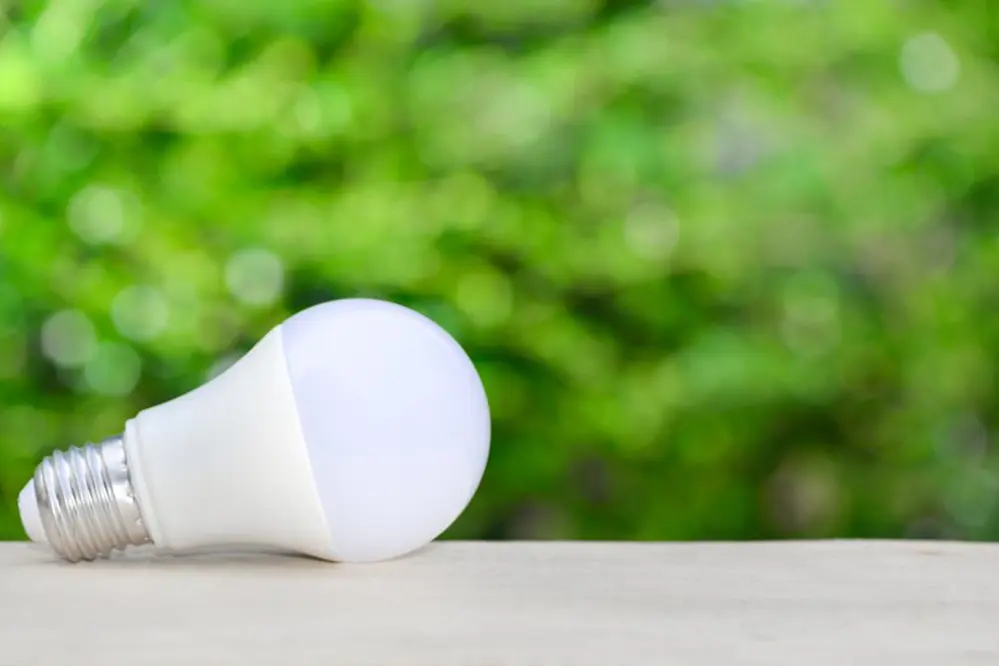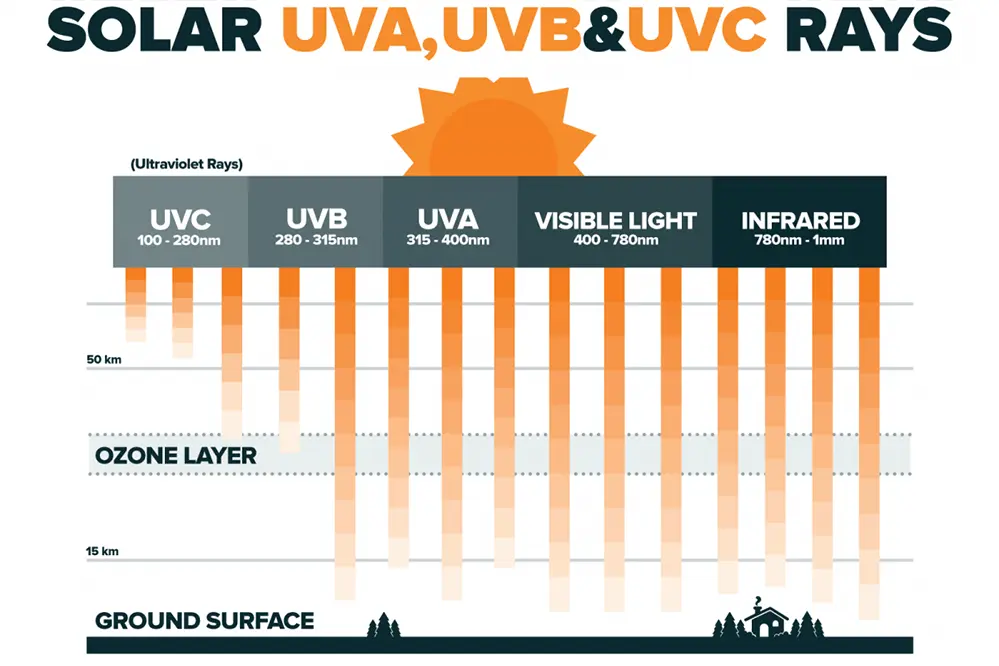Have you ever turned off your LED lights, only to find them still glowing faintly in the dark? This common scenario leaves many homeowners puzzled, wondering why LED lights glow when off. Addressing this issue is crucial, as it can impact both your energy consumption and the ambiance of your home.
The significance of resolving this glow extends beyond mere aesthetics. It can lead to unnecessary energy usage and potential electrical issues if left unaddressed. Understanding the root causes, such as residual current or improper wiring, is the first step toward finding a solution.
Fortunately, there are several ways to tackle this problem. From simple adjustments to more technical solutions, you can eliminate the unwanted glow and optimize your lighting system. By exploring these options, you can ensure your LED lights operate efficiently and effectively.
Stay with us as we uncover the reasons behind this mysterious glow and provide actionable insights to help you stop LED lights from glowing when off. With the right knowledge and tools, you can transform your home lighting experience and enjoy a more serene environment.
Understanding LED Light Glows

LED lights, celebrated for their efficiency and longevity, occasionally exhibit an unexpected glow when switched off. This behavior often results from residual voltage that continues to power the bulb faintly.
Charging circuits such as dimmer switches can sometimes contribute to this anomaly. A low level of current might still flow.
The primary cause of persistent glowing is frequently linked to electrical components, including transformers, improperly grounded circuits, or missing earth wire, with solutions sometimes involving the use of a zener diode to regulate voltage. These may lead to a scenario where minimal current continues, sustaining a subtle luminescence.
While the glow itself is usually not a cause for concern, addressing it is crucial for achieving an ideal living experience free from unwarranted distractions. Solutions like using an LED-compatible dimmer switch or ensuring the wiring is up to standard can significantly alleviate this issue, enhancing both functionality and aesthetic satisfaction.
Common Causes of LED Lights Glowing
Residual electricity can trigger LED lights’ subtle glow.
One prevalent cause of LED lights glowing even when turned off is the residual current present in the circuit. It’s not uncommon for this to arise from capacitive coupling, where close proximity allows for minor electricity transfer between wires. Moreover, improper wiring or an imperfectly grounded system can exacerbate this phenomenon, unintentionally facilitating a continuous faint glow in the absence of designed illumination.
Capacitive coupling can lead to unintended light emission.
Power surges and intermittent electrical signals, such as those from nearby electronic devices, can further contribute to the glowing effect. While these occurrences are mostly benign – not posing any major hazards or significantly impacting energy usage – they can, nevertheless, result in a prolonged glow, causing unwelcome nighttime illuminations.
Ultimately, examining these common causes can illuminate valuable insights regarding LED lighting systems, empowering both individuals and professionals to better navigate post-2023 advanced lighting solutions. By understanding these nuances, we unlock the potential to not only troubleshoot effectively but also embrace unprecedented opportunities for lighting innovation, turning challenges into stepping stones toward a brighter, wiser future.
Electrical Leakage and LED Lights
Electrical leakage can cause LED lights to glow. This occurs when small amounts of unwanted current flow through circuits. Even when the lights are switched off, trace currents can continue using capacitive coupling and other leakage paths. Consequently, LEDs may emit a faint glow, reflecting an inefficiency in the electrical system.
The glow does not typically indicate circuit faults. Nevertheless, it represents a minor flow of electricity that can interact with the fine electronics within LED bulbs. As a result, if other household devices emit electrical signals, the interference can further exacerbate this phenomenon.
This challenge of persistent glow can be mitigated. Ensuring sound electrical connections and incorporating devices like resistors can block unwanted currents. Modifying circuit configurations effectively creates pathways that negate electrical leakage.
Proactively addressing issues of electrical leakage can yield tremendous benefits, revitalizing our spaces to meet the evolving needs of modern lighting. This approach enables future lighting solutions to enhance performance while reducing distractions caused by residual glow.
A comprehensive understanding of electrical leakage empowers homeowners and professionals to maximize energy efficiency. This insight not only helps in mitigating unwanted light emissions but also fuels the progression of innovative LED technologies, fostering an era where illumination is not just a utility, but a transformative experience.
Identifying Faulty Wiring Issues
Faulty wiring can cause LED lights to glow even when switched off, leading to inefficiencies and energy wastage.
When you suspect electrical anomalies in a particular lighting circuit, it’s crucial to examine wiring connections. Loose or corroded wires can inadvertently allow small currents to continue flowing, causing LED lights to emit a faint glow. Identifying such issues involves inspecting connections for physical wear and ensuring proper insulation, safeguarding from unnecessary electrical disturbances.
Moreover, these issues may be part of a broader spectrum of wiring faults. To pinpoint persistent glow problems, engage with each component in the circuit to ensure its integrity, taking special note of how connections are made and secured within the wiring configuration.
In conclusion, addressing these potential wiring faults with meticulous care can significantly reduce unwanted residual glow. As you rectify these issues, not only do you enhance the operational efficiency of your lighting systems, but you also embrace a greater commitment to energy-conscious living, which inspires innovative approaches to harnessing the power of LED technology in dynamic, sustainable ways.
The Role of Dimmer Switches
Dimmer switches can transform your lighting system, offering a nuanced control of the ambiance beyond just on and off. However, a common challenge arises when using dimmers with LED lights.
In some systems, LEDs may glow even when turned off due to dimmer switch settings. This occurs because most dimmer switches, particularly older models, pass a minimal residual current.
Notably, dimmer switches require a certain wattage threshold to function effectively, which many LED lights may not meet, leading to a persistent glow.
Choosing LED-compatible or modern, digital dimmer switches is critical in addressing this issue, ensuring they are rated for low-wattage use. Additionally, verifying that they have trailing-edge technology can enhance LED performance.
These contemporary dimmers minimize the likelihood of electrical leakage by tailoring the voltage to the specific needs of LED lights. By making informed choices in your lighting system components, you can eliminate residual glow.
Ultimately, the role of dimmer switches is evolving in synergy with advances in technology. Embracing these new solutions can redefine your lighting experience, ensuring it meets both aesthetic desires and energy efficiency goals.
How Voltage Affects LED Glow
Voltage plays a pivotal role in whether LED lights glow when off.
Interestingly, residual voltage can find its way into circuits, making the use of a bypass capacitor necessary. This can manifest in LEDs that appear off yet emit a faint glow, effectively showcasing the stark sensitivity of these efficient light sources. Consequently, small amounts of stray electricity can illuminate them, even after switching off the main power.
The capricious nature of electricity often defies expectations.
Newer LED models are designed to tackle this – but their older counterparts are prone to excess voltage creeping in via the wiring – so it becomes crucial to explore energy-saving, smart-circuit solutions.
The exciting landscape of home lighting technology offers unprecedented opportunities for those willing to embrace innovative approaches. By leveraging cutting-edge materials and designs, you can significantly mitigate unwanted LED glow, achieving a harmonious balance between aesthetic brilliance and functional excellence.
Grounding Problems and Their Impact
Proper grounding is essential to prevent LED lights from glowing when turned off. When a circuit lacks effective grounding, residual currents may appear, causing the LEDs to illuminate faintly. This curious glow not only causes frustration but can also raise concerns about energy efficiency.
In 2019, residential structures in various regions experienced an increased number of grounding-related issues, highlighting how vital it is to establish proper electrical grounding right from the start. Homeowners found that inadequate grounding significantly altered the performance of their lighting systems, inadvertently affecting the aesthetics and energy consumption.
Without effective grounding, small amounts of electrical leakage might flow through the circuit, causing the LEDs to emit a glow despite being switched off. This phenomenon further underscores the importance of precise grounding and its critical role in maintaining the integrity of electrical systems while preventing unwanted surprises.
To ensure the best results and prevent grounding issues, consider conducting regular home inspections to detect and rectify potential grounding flaws. Employing professional electricians knowledgeable in the latest standards can also render peace of mind, enhancing the longevity and performance of your LED lighting solutions.
By understanding the broader impacts of grounding problems, homeowners and professionals alike can implement preventive measures that eliminate excess energy consumption and preserve the ambient eloquence of their spaces.
Choosing the Right Type of LED Bulbs

LED bulb selection significantly influences the functionality and performance of your lighting system. When opting for LED bulbs, consider the color temperature, brightness, and voltage compatibility to ensure both efficiency and aesthetic harmony within your space.
Recent years, energy-efficient guidelines, including energy ratings, have directed buyers toward products that minimize environmental impact. LED bulbs are inherently poised for energy reduction, but choosing the right ones elevates this advantage, ensuring that your lighting fits seamlessly into your consumption goals.
Indeed, it’s not just about picking bulbs that don’t flicker; understanding their electronic intricacies can also help avoid the subtle issue of LEDs glowing when off. This factor requires a keen eye for compatibility and a proactive approach to reading labels and specifications.
Choosing the right LED bulbs alleviates concerns about excessive energy usage and unwanted glow when off. Buying bulbs labeled with consistent lumen output, energy certifications, and robust warranties can help safeguard against premature failures.
Practically speaking, investing time in research and trusted brands will pay dividends. Remember, perfect lighting is more than bright—it’s smart.
Installing a Resistor to Stop Glow
Addressing LED glow can be an enlightening endeavor.
The persistent glow of LED lights, even when switched off, often stems from electrical interference or residual voltage. By installing a resistor, you can curtail the unwanted luminous illumination by diminishing the excess current. Essentially, the resistor acts as a bridge that helps redirect the residual electrical energy, ensuring the LED light remains off.
The installation of resistors can enhance LED lighting efficiency.
Adding this feature might seem challenging, but it’s a minor modification with significant advantages. Ideally, you should use a resistor with a power rating appropriate for your circuit to prevent overheating—typically around 1-watt resistors are the norm for most LED setups.
As technological sophistication continues to redefine our interactions with everyday devices, strategies like adding resistors are informed choices that keep us ahead in maximizing energy efficiency. This practical step not only ensures optimal delivery of electrical resources but fortifies your experience with LED lighting by eliminating unwanted glow, thereby enhancing your sustainable living efforts.
Using LED-Compatible Dimmers
Integrating LED-compatible dimmers unlocks revolutionary potential, paving the way to a transcendent evolution of ambient lighting, eliminating unwanted afterglow, and ensuring an inspiring future of intelligent energy use.
Such innovative dimmers adjust to the specific electrical characteristics that LED lights demand.
Moreover, they are designed with features that prevent the lingering glow associated with LED variance, enhancing utility whilst conserving power.
When contemplating a switch to sophisticated dimming options, installing these dimmers is both proactive and forward-thinking.
The available dimmers boast compatibility across various LED configurations, ensuring a tailored fit for any setting, while simultaneously addressing the common issue of LED glow when turned off. Their integration is a testament to human ingenuity, translating into seamless brightness control and demonstrating the transformative impact of advanced engineering principles.
Finally, take heart in knowing that the adoption of these tech-driven tools is a leap forward in achieving precision lighting that harmonizes with innovative design. Your commitment to using these dimmers symbolizes an embrace of a future where efficiency and excellence coalesce beautifully.
When to Consult an Electrician
Upon discovering that your LED lights persist in glowing, even when turned off, a licensed electrician can provide a comprehensive evaluation of your circuitry and electrical systems.
Their specialized expertise is crucial in diagnosing complex electrical dilemmas.
Sometimes, faulty dimmers may be the cause, requiring professional assessment to ensure compatibility and functionality.
Furthermore, inadequate wiring may lead to these persistent issues, necessitating an evaluation of your home’s electrical infrastructure.
An electrician may also check for ghost voltage, a phenomenon sometimes observed with LED installations, providing solutions tailored to your unique circumstances for safe and efficient energy use.
Thus, when uncertainty looms over why LED lights glow despite being off, a professional assessment ensures optimal functionality and peace of mind.
How to Safely Inspect Wiring
Before embarking on any electrical inspection, ensure your safety by disconnecting power sources, using appropriate tools and attire. Turn off the circuit breaker related to the area you plan to inspect.
It’s paramount to have a reliable non-contact voltage tester close by.
This device is indispensable for confirming that power is indeed off before delving deeper. Methodically inspect wiring for signs of wear, such as fraying, discoloration, or any unexpected contact with conductive materials, safeguarding against potential hazards.
Gently navigate through the wiring pathways to garner a comprehensive assessment, ensuring all connections remain robust and insulated. If at any juncture you encounter uncertainty, remember that professional expertise is always at your disposal to fortify both safety and efficiency. By embracing knowledge and caution, you’re not only protecting your home, but cultivating an environment where innovation thrives.
Comparing LED and Incandescent Lights
Explore key differences between LED and incandescent lights.
The evolution from incandescent to LED lights marks a bright future. This shift signifies not only the tangible advantages of efficiency savings, with LEDs using substantially less energy than their legacy counterparts, but also the environmental boon from their extended lifespan. Consequently, investing in LED lighting is considered a sustainable step towards minimizing carbon footprints.
LEDs outlast incandescent lights, reducing replacement frequency.
LED lights entail an upfront cost – yet this cost turns into substantial savings in the long term – as the reduced energy consumption and extended lifespan showcase cost-effective brilliance.
The stark contrast between these two lighting technologies yields fascinating insights into modern lighting solutions, underscoring why as of 2023, LED lights dominate the market. Their increase in popularity stems from their adaptability across various settings, offering innovative ways to illuminate spaces while adhering to environmental awareness principles.
Key Benefits of Professional Installation
Engaging a professional installer ensures your LED lights are set up optimally, maximizing their efficiency and lifespan while minimizing any potential issues such as unintended glow.
Certified professionals are adept at managing the nuances of electrical installations, significantly reducing the risk of malfunctions.
Remarkably, these experts possess the knowledge to address and prevent LED glow (a common post-installation inconvenience).
Professionals are equipped to recommend appropriate products and configurations, ensuring your lighting system functions seamlessly.
This proactive approach not only fosters optimal performance but also empowers you with knowledge about potential technical advancements in LED technology that might benefit your setup.
Ultimately, by opting for professional installation, you’re investing in peace of mind. Skilled technicians ensure that your installation process abides by the latest industry standards.
Troubleshooting LED Glows at Home
Identifying the source of LED glow.
First, consider checking your dimmer switches. Some dimmer switches are not compatible with LED lights, which can lead to residual power causing the glow. It is pivotal to ensure that the dimmer switch supports LED lighting; otherwise, replacing it with one that does could solve the issue altogether.
Loose wiring could be another culprit.
Conduct a careful inspection of your lighting circuits. Ensuring all connections are secure and intact helps mitigate inconsistent power flow that might lead to glowing when off.
For persistent issues, installing a capacitor across the live and neutral wires of the circuit may help. This device absorbs any stray currents, effectively preventing unwanted illumination. By addressing these troubleshooting steps, you’re proactively tailoring your home to function seamlessly, establishing an environment where LED lighting operates exactly as intended, free of unexpected glow.
Best Practices for LED Maintenance
Regular cleaning and dusting crucially extend both the lifespan and performance of your LED lights, preventing dirt buildup and heat entrapment.
Moreover, it’s vital to invest consistently in a scheduled maintenance program that includes examining electrical connections, checking for any visible damage, and ensuring proper installation. Such actions not only enhance your lights’ efficiency but also foster a secure and dependable lighting environment ideal for sustaining longevity and optimal functionality. Practicing vigilant maintenance will help our LED systems perform the best they can.
Furthermore, ensure that you purchase LEDs with a warranty from reputable manufacturers. In choosing high-quality products, you’re investing not only in advanced solutions but also in peace of mind through extensive manufacturer guarantees and support.
In conclusion, by adopting a systematic approach to maintaining LED lights, you greatly enhance their resilience and efficacy, ultimately translating into energy savings and reduced replacement costs over time. These proactive measures empower significant sustainability and encourage innovation in lighting technology that leaves both an environmental and economic impact. Let’s ensure our LEDs shine bright for many promising years ahead.
Conclusion
In our pursuit to effectively turn off LED lights and address the reasons behind their persistent glow, we have delved into solutions with both optimism and precision. By gaining a deeper understanding of the underlying causes, we can significantly reduce unwanted glow, ensuring that our LED systems operate at peak efficiency. This proactive approach not only enhances the functionality of our lighting systems but also contributes to a more harmonious living environment. By embracing advanced tools and techniques, we empower ourselves to manage LED technology effectively, paving the way for vibrant and efficient outcomes.
As we navigate the ever-evolving landscape of technology, each step towards innovation, such as managing LED glow, reflects our commitment to progress. Prioritizing excellence and sustainability, we contribute to a future that shines with promise. By integrating environmentally conscious habits and staying abreast of technological advancements, we open doors to possibilities that are not only conceivable but also bright and boundless. This journey underscores the importance of continuous learning and adaptation, ensuring that our efforts today lead to a more sustainable and enlightened tomorrow.





